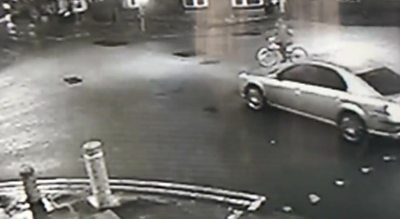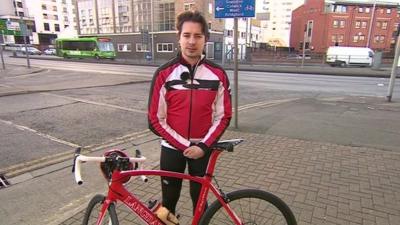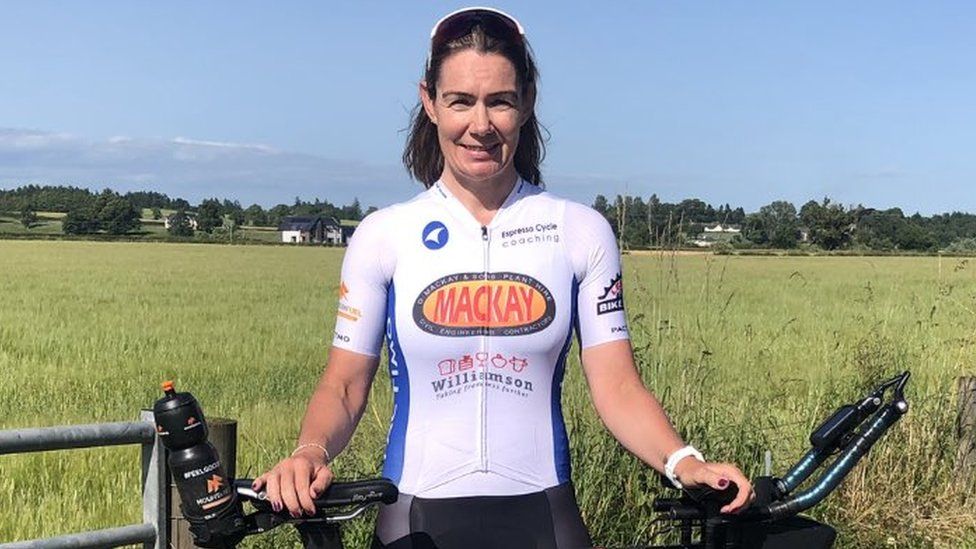The Silent Scourge: Understanding Cyclist Hit-and-Run Incidents And Their Devastating Impact
The open road offers freedom, exercise, and a sense of connection to the world around us. For cyclists, it's a way of life, a passion, and often, a primary mode of transportation. However, this freedom comes with inherent vulnerabilities, especially when sharing the road with motor vehicles. Among the most egregious and heartbreaking dangers cyclists face are hit-and-run incidents – collisions where a driver strikes a cyclist and then flees the scene, leaving their victim behind to suffer the consequences, often alone and critically injured, or worse, dead.
These incidents are not just isolated accidents; they are a pervasive and tragic reality that casts a long shadow over the cycling community. They highlight a disturbing disregard for human life and a profound lack of accountability. From bustling city streets to quiet suburban roads, the stories of cyclists being struck and abandoned are alarmingly frequent, leaving behind a trail of physical trauma, emotional devastation, and a relentless pursuit of justice. This article delves into the harrowing reality of cyclist hit-and-runs, exploring their devastating impact, the challenges of seeking justice, and the collective efforts needed to prevent these senseless tragedies.
The Alarming Reality of Cyclist Hit-and-Runs
The data paints a grim picture: cyclist hit-and-runs are a widespread problem affecting communities across the nation. These aren't just statistics; they are individual lives irrevocably altered or tragically cut short. The incidents span a vast geographical area, from the dense urban landscape of New York City to the quieter stretches of South Carolina and the expansive roads of Texas.
- Face Massage Before And After
- How Often Do Girls Get Horny
- Ideas For Black Hair Color
- Kate Beckinsale Eye Color
- Summer Nails And Toes
In New York City, for instance, the West Village saw a cyclist seriously injured in a hit-and-run, prompting a police investigation that thankfully led to an arrest. Yet, in Astoria, Queens, the situation turned fatal when a woman cyclist was struck and killed by a pickup truck fleeing from police. Another beloved avid bicyclist in Queens met a similar fate, killed in a hit-and-run by a burglary suspect trying to evade NYPD cops. These incidents underscore the unpredictable and often violent nature of such collisions, where drivers, sometimes already engaged in criminal activity, show no regard for the lives they endanger.
Moving south, South Carolina's York County and Clover have been repeatedly scarred by these tragedies. Anthony Parker, 31, was identified as a victim killed in a York County hit-and-run, with the collision occurring early one Sunday morning on SC-55 near North Paraham Road. The S.C. Highway Patrol has had to appeal to the public for help in finding vehicles and drivers involved in multiple fatal incidents in the area, highlighting the difficulty in tracking down those responsible. The Fort Braden community in Florida also mourned after a local woman was left dead in a hit-and-run late one Sunday night, with the FHP actively searching for the driver.
The problem extends beyond the East Coast. In Butler County, a bicyclist was injured in a hit-and-run with a sedan driver, prompting victim David to declare, "I want them to be held accountable." In Downtown Austin, an injured cyclist hoped for accountability after an e-bike hit-and-run. Even in Las Vegas, police announced the arrest of a second teenager in a series of hit-and-run crashes, including one that claimed the life of a former California police chief who was riding his bicycle. The terrifying footage from Texas, showing two cyclists brazenly run over by a hit-and-run driver near the Dallas-Fort Worth International Airport, serves as a stark reminder of the sheer audacity and cruelty sometimes involved.
- Jake Gyllenhaal And Taylor Swift Age Gap
- Pastel Colour Hair
- Amazon Finds For Women
- Pubic Area Exfoliant
- Do Alfie And Emily Get Back Together
A Spectrum of Tragedies: From Serious Injuries to Fatalities
The outcomes of hit-and-run incidents vary, but all leave lasting scars. They range from severe physical injuries requiring extensive medical care and rehabilitation to the ultimate, irreversible loss of life.
Serious Injuries:
- A cyclist in the West Village was seriously injured, requiring police intervention and subsequent arrest of the driver.
- David, a bicyclist in Butler County, sustained injuries, leading to his fervent plea for accountability from the sedan driver who fled.
- An e-bike hit-and-run in Downtown Austin left a cyclist injured and hoping for justice.
- Perhaps most shocking, two Texas cyclists were not only tossed from their bikes but then "brazenly run over" by a hit-and-run driver, an ordeal captured on camera that highlights the extreme violence some victims face.
These injuries often lead to long-term physical pain, emotional trauma, lost wages, and overwhelming medical bills, fundamentally altering the victims' lives and their families'.
Fatalities:
Tragically, many hit-and-run incidents involving cyclists result in death, leaving communities in mourning and families shattered.
- John Wilkinson, a 41-year-old from Broomfield described as a "force of nature," was killed in a hit-and-run on North 95th St.
- Anthony Parker, 31, was killed in a York County hit-and-run on SC-55, leaving his community in Clover devastated.
- A local woman in the Fort Braden community died late Sunday night after a hit-and-run.
- In Astoria, Queens, a woman cyclist was struck and killed by a pickup truck fleeing police.
- Another beloved avid bicyclist in Queens was killed by a burglary suspect trying to evade NYPD cops.
- A former California police chief riding his bicycle was among the victims of a series of hit-and-run crashes in Las Vegas.
- In Del Valle, a man's death from a hit-and-run led to a third juvenile being arrested and charged with murder, underscoring the severity of these crimes.
Each fatality represents not just a statistic, but a person with a life, dreams, and loved ones, whose absence leaves an irreplaceable void.
The Pursuit of Justice: Investigations and Accountability
The immediate aftermath of a hit-and-run is often chaotic and terrifying, but it quickly transitions into a determined effort by law enforcement and victims' families to identify and apprehend the responsible parties. The pursuit of justice is a complex and often lengthy process, but there are instances of success and ongoing commitment from authorities.
Ongoing Searches and Public Appeals:
In many cases, the initial phase involves extensive searches for the fleeing driver and vehicle. The South Carolina Highway Patrol, for example, has repeatedly asked for the public’s help to find cars and drivers involved in fatal hit-and-runs in York County and Clover. Similarly, police in Butler County are searching for the driver of a sedan that injured a bicyclist, and the FHP is searching for the driver who left a bicyclist dead in Fort Braden. In New York, police were searching for three suspects involved in a fatal hit-and-run in Astoria, Queens, who were fleeing a burglary scene.
Arrests and Charges:
Despite the challenges, arrests are made, bringing a measure of closure and hope for accountability to victims and their families:
- Police in the West Village successfully arrested the driver wanted in connection with the hit-and-run that seriously injured a cyclist.
- In Las Vegas, a second teenager was arrested in connection with a series of hit-and-run crashes, including the death of the former California police chief.
- A third juvenile was arrested and charged with murder for a man's death in Del Valle, highlighting the grave nature of some of these incidents.
Victims' Call for Accountability:
Beyond law enforcement efforts, the victims themselves often become powerful advocates for justice. David from Butler County, injured in his incident, voiced a sentiment shared by many: "I want them to be held accountable." This desire for accountability is not just about punishment; it's about acknowledging the profound harm caused and ensuring that such reckless and cowardly acts do not go unpunished.
Why Do Hit-and-Runs Happen? Understanding the Motives
The reasons a driver flees the scene of a collision are varied, but they often stem from a combination of fear, panic, and a desire to avoid legal consequences. Common motives include:
- Fear of DUI/DWI Charges: Drivers under the influence of alcohol or drugs often flee to avoid immediate arrest and the severe penalties associated with impaired driving.
- Outstanding Warrants or Criminal Activity: As seen in the Queens incidents, drivers involved in other crimes, like burglary, or those with outstanding warrants, will flee to avoid apprehension for those offenses.
- Lack of License, Insurance, or Registration: Drivers operating vehicles illegally might flee to avoid penalties related to their status.
- Panic and Shock: In the immediate aftermath of a collision, some drivers may panic and make the irrational decision to flee, only to regret it later.
- Distracted or Reckless Driving: Drivers who were distracted (e.g., by cell phones) or driving recklessly may flee to avoid responsibility for their negligence.
- Lack of Awareness: In some rare cases, a driver might genuinely not realize they hit something, though this is less common with a human impact.
Regardless of the motive, the act of fleeing is a criminal offense that compounds the initial harm and denies the victim immediate aid and justice.
A Call to Action: What Can Be Done?
Addressing the epidemic of cyclist hit-and-runs requires a multi-faceted approach involving drivers, cyclists, law enforcement, and community leaders. It's about fostering a culture of shared responsibility and respect on the road.
For Drivers:
- Stay Alert and Focused: Avoid all distractions, especially cell phones. Pay full attention to the road and your surroundings.
- Look for Cyclists: Actively scan for cyclists, especially when turning, opening doors, or changing lanes. Remember, cyclists have a right to the road.
- Give Space: Always provide ample space when passing cyclists – at least three feet, or more if possible.
- Know the Law: Understand and obey traffic laws pertaining to cyclists, including right-of-way rules.
- Stay at the Scene: In the event of a collision, always stop, render aid if possible, and contact emergency services. Fleeing is a crime with severe consequences.
For Cyclists:
- Be Visible: Wear bright, reflective clothing, especially at dawn, dusk, or night. Use front and rear lights, even during the day.
- Follow Traffic Laws: Obey all traffic signals, signs, and lane markings. Ride predictably and signal turns.
- Assume You're Not Seen: Ride defensively. Make eye contact with drivers when possible and anticipate potential hazards.
- Use Bike Lanes: Utilize designated bike lanes and paths where available and safe.
- Report Incidents: If you witness a hit-and-run, gather as much information as possible (vehicle description, license plate, direction of travel) and report it to the police immediately.
For Communities and Law Enforcement:
- Improve Infrastructure: Invest in safer cycling infrastructure, including protected bike lanes, dedicated bike paths, and clearer road markings.
- Public Awareness Campaigns: Educate both drivers and cyclists on road safety, shared responsibilities, and the severe consequences of hit-and-runs.
- Stronger Penalties: Advocate for and enforce stricter penalties for hit-and-run offenses to deter potential perpetrators.
- Dedicated Investigations: Continue to prioritize and dedicate resources to investigating hit-and-run incidents, leveraging technology and community tips to bring offenders to justice.
The tragic incidents of cyclist hit-and-runs underscore a critical need for greater awareness, accountability, and empathy on our roads. Every cyclist who takes to the street deserves to do so without fear of being struck and abandoned. The stories of John Wilkinson, Anthony Parker, David, and countless others serve as a stark reminder of the human cost when drivers fail to uphold their responsibility. While law enforcement continues its vital work in apprehending those who flee, preventing these tragedies ultimately falls to all of us – drivers, cyclists, and communities – to foster a culture of respect, vigilance, and shared safety. Only then can we hope to reduce the silent scourge of cyclist hit-and-runs and ensure that the open road remains a place of freedom, not fear.
Final Summary: Cyclist hit-and-run incidents are a pervasive and devastating issue across the United States, leading to serious injuries and numerous fatalities in locations like NYC, South Carolina, Texas, and Las Vegas. Victims range from everyday commuters to avid enthusiasts, often left abandoned by drivers fleeing for various reasons, including fear of DUI or other criminal charges. While law enforcement actively pursues offenders, often with public assistance, and has made arrests in several cases, the fight for justice and accountability remains ongoing. Addressing this problem requires a collective effort: drivers must be more vigilant and responsible, cyclists must prioritize visibility and adherence to laws, and communities must invest in safer infrastructure and stronger legal deterrents to protect vulnerable road users.
Article Recommendations



Detail Author:
- Name : Seth Koelpin
- Username : bdubuque
- Email : senger.jewel@kshlerin.com
- Birthdate : 2000-04-08
- Address : 87661 Evans Viaduct Apt. 220 Lake Mia, AK 07992
- Phone : +1-931-474-4706
- Company : Dickinson, Brakus and Reilly
- Job : Ship Mates
- Bio : Consequatur quos deleniti et est voluptatem eius quisquam. Quaerat corrupti sunt aut soluta a autem nemo.
Socials
linkedin:
- url : https://linkedin.com/in/lance.welch
- username : lance.welch
- bio : Et enim porro non ad beatae cum occaecati.
- followers : 2484
- following : 2250
facebook:
- url : https://facebook.com/lwelch
- username : lwelch
- bio : Quo a rerum assumenda suscipit facilis aliquam vero.
- followers : 4745
- following : 2687